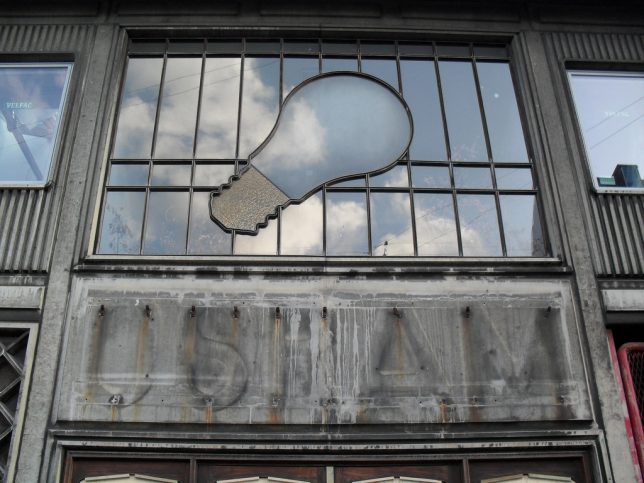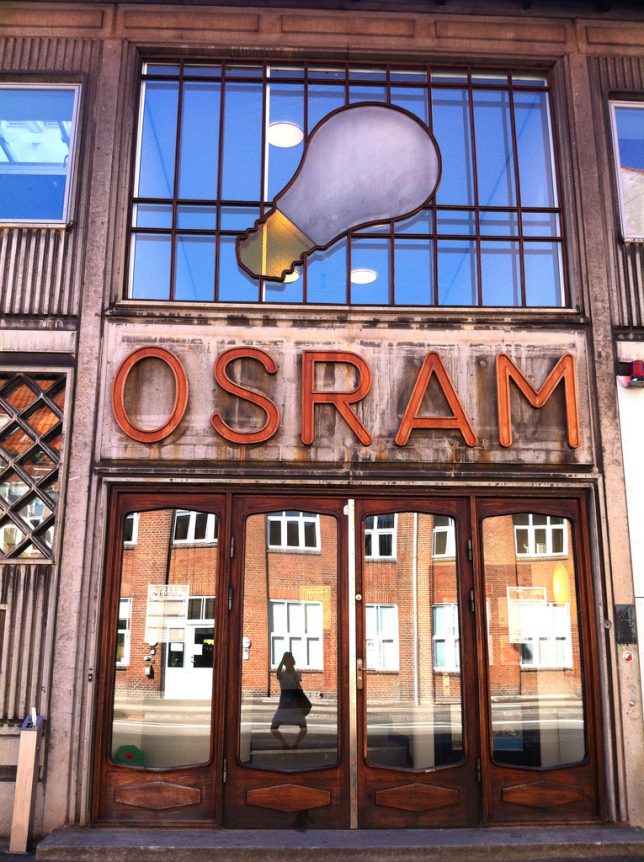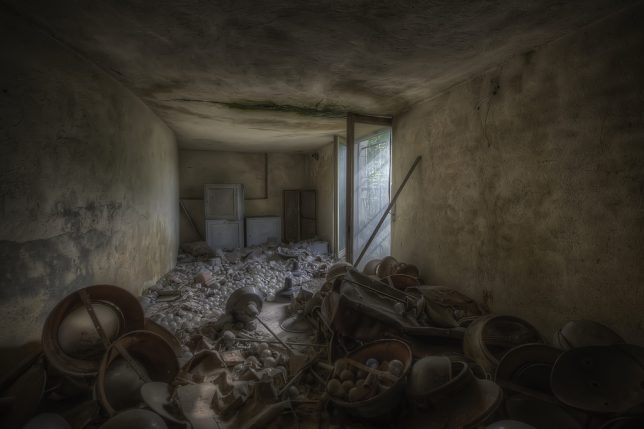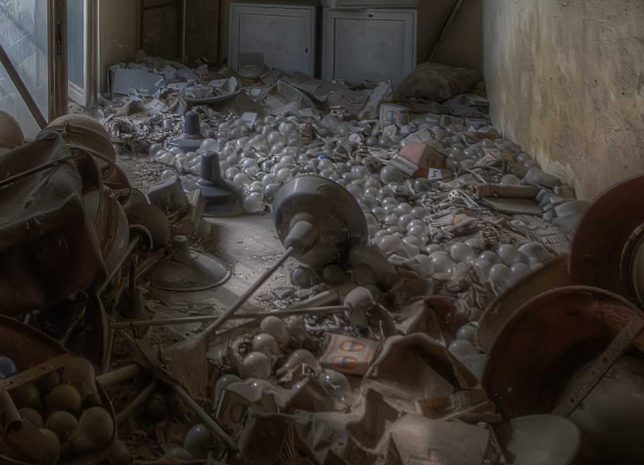Most DSLR and mirrorless cameras have a feature called Bulb Mode. If you’re like me, you probably saw that in one of the menus or buttons when you first got your camera and have promptly ignored it ever since. Even the name sounds weird, and at first glance, you might think it has more to do gardening than photography. But it’s actually a very useful option that can unlock all sorts of creative possibilities with your camera.
Learning to use Bulb Mode does take a bit of practice though, and it helps to understand how it got its strange name in the first place. But I think you’ll find that the payoff is worth your time.

Lightning shot using Bulb Mode.
History Lesson
Way back in the early days of photography, long before digital image sensors existed, and autofocusing lenses were little more than science fiction, the act of taking a picture still worked in many ways like it does today. Hidden inside the sealed innards of a camera was a piece of light-sensitive film onto which an image would be projected when the camera’s shutter was opened, thus letting light pass through the lens and onto the film.
It’s the same principle that DSLRs use today. The only major change is how the shutter is constructed and the manner in which the timing is controlled. A hundred years ago there was no such thing as computer-powered cameras or precise mechanical actuators that could open the shutter for a long period of time (typically longer than one second). Instead, the photographer held a small bulb in his or her hand which was attached to the camera’s shutter by a piece of tubing.
Squeezing the bulb opened the camera shutter and releasing the bulb closed it, which meant the timing of the shutter was entirely up to the individual taking the photo. As long as the bulb was squeezed, the shutter would stay open. This method continued to be used on cameras for years to come, and it’s even possible to find bulb-style shutter releases for cameras today.
In short, think of Bulb Mode as Time Travel Mode. It basically makes your camera function like a camera from 100 years ago, when you had to squeeze a bulb to open the shutter, and then release the bulb to close it. The only major difference is that unless you literally have a bulb-style shutter release like the one pictured below, you will press the shutter button to open the shutter and release your finger to close it. Pretty neat, isn’t it?

Squeeze the bulb to open the shutter on this Pentax 35mm film camera. Release the bulb to close the shutter. Image courtesy of Wikimedia Commons.
Bulb Mode Today
Most modern cameras allow you to set the shutter speed anywhere from 1/4000th of a second and 30 seconds, which gives you an incredible range of creative photographic possibilities. These shutter speeds work in tandem with a camera’s light meter, as well as the ISO and lens aperture, to help you get properly-exposed images with little to no fuss or hassle. With that in mind, the idea of squeezing a bulb to keep the shutter open seems more than a bit anachronistic. Why would anyone want to hold the shutter open manually when you can just dial in a preset value for the shutter speed and not worry about anything else?
The benefit of Bulb Mode is that it lets you keep the shutter open for as long as you want. The timing is not specified by you, the camera, or anything else which means it’s entirely your decision whether to use a fast, slow or extremely slow shutter speed. Using Bulb Mode, it’s possible to leave your shutter open for one, five, 10 minutes or even longer. The only limitation is your camera’s battery and your own degree of patience, which opens the door for some amazing photographic opportunities.

Finding Bulb Mode

Canon mode dial, B is Bulb.
The first step in using Bulb Mode involves figuring out how to access it on your camera, especially if you did not have even known it existed and have never tried to look for it. Because Bulb Mode involves controlling the shutter you might think that you need to first put your camera in Shutter Priority mode, but that’s generally not the case.
For most cameras, you actually need to use Manual Mode and then set your shutter speed to as low as it can go. You will likely see decreasing speeds of 5 seconds (your display may show that as 5″), 10 seconds, and so on, all the way down to 30 seconds at which point one more click of the dial will put your camera into Bulb Mode. If this doesn’t work for you it’s possible your camera simply doesn’t have Bulb Mode (most DSLRs and mirrorless cameras do have it, on some Canons, it is on the Mode dial as B). If you really aren’t certain just Google the brand and the model of your camera along with the words “bulb mode,” which will likely turn up some useful results.

Instead of showing a shutter speed along with a light meter, my camera’s LCD screen now displays the word “bulb” to indicate that I have entered Bulb Mode.
Understanding Bulb Mode
Once your camera is in Bulb Mode a couple of things go a little haywire and you may think your camera is broken. Before you send it in for service, just know that everything is fine…but different. Right away you’ll notice that your camera’s light meter no longer works, and there is no indication of what exposure settings you should be using to get a properly-exposed image.
This happens because your camera has no idea how long you want to leave your shutter open, and without that information, it doesn’t know whether to indicate if the final image will be overexposed, underexposed, or just right. This can make Bulb Mode positively primitive territory, and if you have ever wanted to know what your photographic forebears had to deal with when taking pictures 100 years ago you now know firsthand.
The best way to figure out which settings to use is to simply start experimenting. The more you use Bulb Mode you will start to figure out what settings like aperture and ISO might be appropriate given the scene you are photographing. However, there are some general tips that can be applied, which I will cover in the next section.
Holding the button
The other weird thing about Bulb Mode, which directly hearkens back to the earliest days of photography, is the manner by which the shutter is controlled. To open the shutter you press the shutter button (a sentence which is most likely eliciting rolled eyes due to how obvious it sounds). However, there’s a catch.
The shutter stays open only while your finger is pressing the shutter button. It’s just like squeezing a pneumatic bulb in the early days of photography. As you might guess by now, the way to close the shutter is to take your finger off the button. It’s a strange feeling, and if you have a DSLR handy I invite you to give it a try right now. Go get your camera, put it in Manual, spin the control dial until you’re in Bulb Mode, and take a picture. I’ll wait.

Using Bulb Mode
Did you snap a photo? I bet it felt kind of strange to have the shutter open and close only when you pressed and then released, your finger from the button. This, of course, brings up the next logical question of how do you actually use Bulb Mode to get good pictures? While each person will use it in their own way, there are a couple of guidelines to think about if you want to get good results.
Low light
Bulb Mode is most useful when you have little to no ambient light. It is almost worthless in daylight or in a well-lit room (unless of course, you are using really good ND filters to block some of the light) The best time to try it is at night when everything is pitch black except what you are hoping to photograph.
Setting up to use Bulb Mode
It’s important to keep your camera steady with a good tripod. You are typically dealing with really long exposures, and even the vibration from your finger pressing the shutter button can affect the resulting image. So the sturdier your tripod is, the better your images will turn out. If you have a cable release or some kind of remote shutter trigger for your camera, now is a great time to use it. Make sure you have one that either locks or counts the exposure for you (if you’re using the small wireless one that camera with your camera, you may need to click it once to open the shutter in Bulb Mode and click it again to close the shutter).
Note: You cannot use the 2-second self-timer in conjunction with Bulb Mode, it will not work.
Finally, try using a small aperture of f/8 or f/11 and a low ISO setting like 100 or 200 since the shutter speed is the independent variable in most Bulb Mode photography. This isn’t a requirement, but depending on your subject you might need a wider aperture or higher ISO, particularly if you want to shoot images of stars or capture star trails or other astrophotography phenomena.

I was able to capture a bolt of lightning by holding the shutter open, and the long exposure also shows movement in the clouds too.
When to use Bulb Mode
Now it’s time to experiment and really have fun with Bulb Mode. Everyone will use it in a different way, but here are a couple of ideas to get you started.
- The next time a thunderstorm rolls in, use Bulb Mode to capture lightning strikes. The longer you leave the shutter open, the more lightning bolts you may be able to capture.
- Try light painting, and experiment with using different kinds of light on familiar subjects you might already have just laying around.
- Set up your tripod next to a road and shoot light trails as traffic passes by at the night.
- For a variation on light trails, get a friend have some fun with fire spinning. Note that safety must always come first in these situations, so be sure to keep yourselves, your gear, and the environment around you safe from damage. The best place is a beach with no one around.
- You don’t need fireworks either, and you can get great results with different sources of light from flashlights to sparklers to twirling glow sticks.

Using a long exposure helped me turn this ordinary jar of pasta into a surreal glowing work of art.
Conclusion
These ideas are just scratching the surface of what Bulb Mode can do. The best way to learn is to try it for yourself. If you have any particular tips for using Bulb Mode that you think others would enjoy, or some ideas to try that I didn’t mention here, please leave your thoughts in the comments below!
The post How to Use Bulb Mode for Long Exposure Photography by Simon Ringsmuth appeared first on Digital Photography School.

Digital Photography School






























You must be logged in to post a comment.